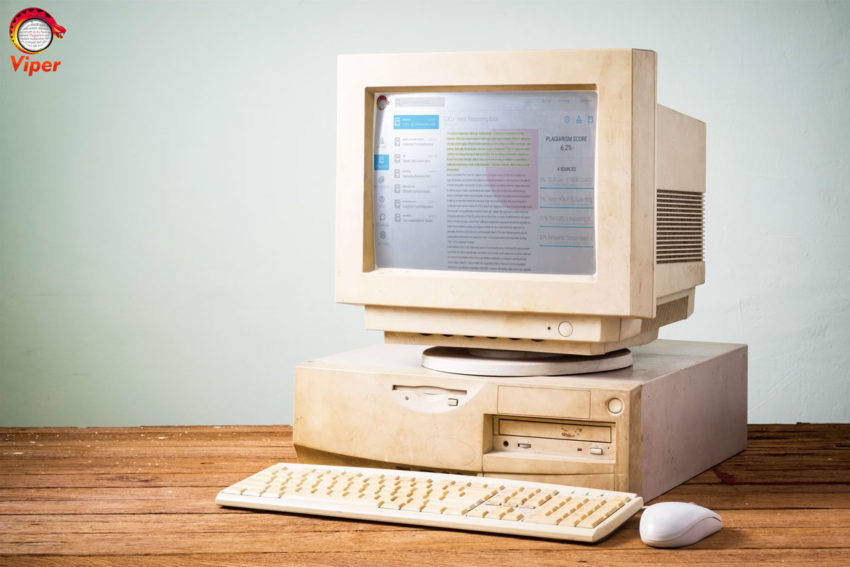Technology and Plagiarism has changed due to the rise of the Digital Age in the last twenty years.
The Rise of the Internet
Just two decades ago (yes, two!) the Internet was a relatively new phenomenon. Students in the 1990s, who used the Internet to conduct research, were seen as progressive. They would have of probably gained extra marks for their creativity and diligence. However, two decades on, anybody who doesn’t have the skills to conduct research is seen as something as a dinosaur. It is also unlikely that one can navigate a university degree these days without having at least some basic computer skills.

New Technological Impacts
This rapid evolution of technology is also likely to have had an impact on plagiarism in universities. These technologies have aided both plagiarists and those seeking to stop plagiarists alike. Plagiarism in the 1990’s was not discussed at any great length. Course handbooks had a chapter dedicated to plagiarism but that was about it.
Back then, it was much more difficult to catch a plagiarist in the act. There were no digital detection systems. Tutors had to identify any copying, or investigate any familiar passages that were not referenced by themselves. But with high workloads, it would have been unlikely that tutors would investigate if plagiarism had been carried out. However, in today’s environment, minor collection of mistakes could be flagged via digital plagiarism software, and an assignment could fail as a result if the cumulative plagiarism score is too high.
Nowadays, universities recommend to make use of technology and sign up to a plagiarism software like Viper. This will help you check your work, making sure that there is no accidental or unintentional plagiarism. Moreover, as university educations are now so expensive, it would make sense to make a small investment in such a service. It will ensure that all of those education costs do not go to waste on a failed degree. If in doubt, it is always better to check as even the best and most diligent of students can fall into the plagiarism trap.
Digital Technologies and the Creation of Online Content
What digital technologies have done is to create an unimaginable amount of online content.Students can now search for any subject matter in a matter of seconds via search engines such as Google. This allows them to locate content that they can use in their work. This can include digital journals, e-books, blogs, or general web content. All of this content needs to provide a source if used.

The Use of Different Types of Sources
Some sources are more valid and reliable than others. These being peer-reviewed journal articles which are more reliable than say a blog written by an unknown individual. It is always important to be selective about these sources. Nevertheless, sloppy note-taking leads to content being easily copied and pasted into your own work. If you do this, plagiarism detection softwares will most definitely flag it as plagiarism.
This kind of plagiarism has become more difficult for those wishing to cheat. Perhaps now, it makes sense for those people to once again use paper sources, and then to check that a digital version of these sources has not been created. If not, then there is less chance of any plagiarised content being identified. However, such an approach may be illogical, as it is now very easy to find sources online. Of course, if you have deficient writing skills, and a good understanding of digital technologies, then this may well be a chosen route.
The Role of Universities
For those not aware of plagiarism detection softwares, such as Viper, might easily fall into the trap of being labelled a plagiarist. Today’s university course handbook should run you through the ins and outs of plagiarism. Handbooks also provide hints and tips on how to avoid plagiarism, and what is expected of you in your assignments. If you still have doubts then you should ask your personal tutor for further clarification. It is much better to be clear about what is expected of you before rather than after you start to write an assignment.

Without a doubt, the playing field of plagiarism in universities has very much changed over the past twenty years. Therefore, one must use these technologies to your advantage. To gain access to sources, and for checking that your work does not contain any plagiarism. As such, if you do this, then you can hand in your assignments with a clear conscience. It is well worth having a diligent approach towards plagiarism, and sticking as closely to the rules as possible.
